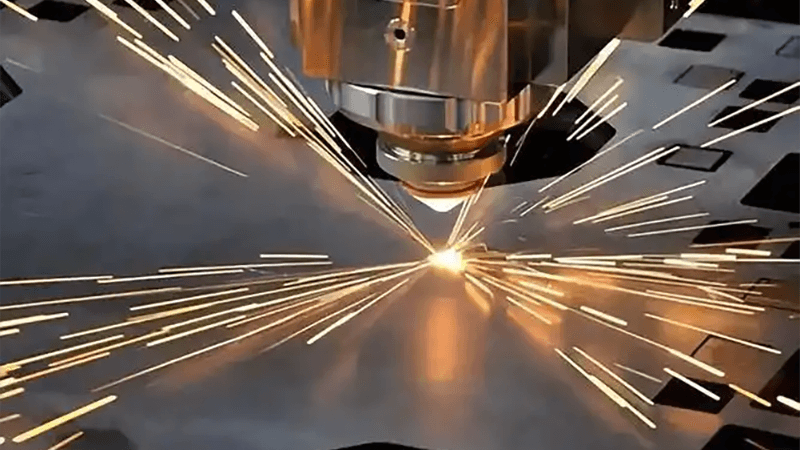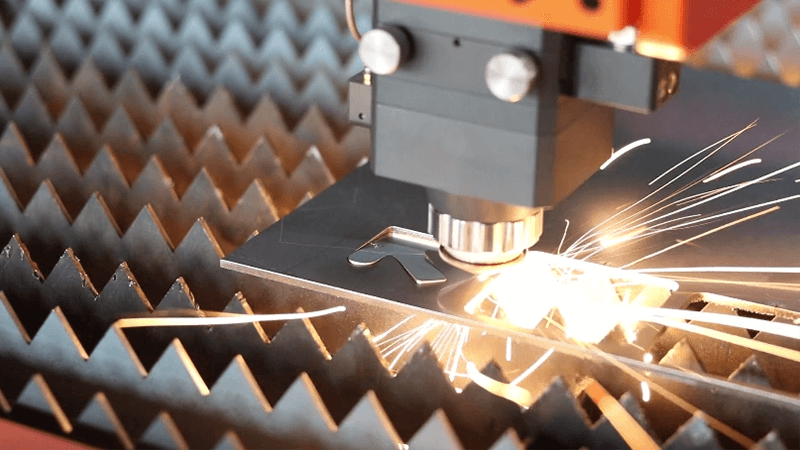If you're struggling to get consistent cuts, burning time on refocusing, or constantly adjusting beam settings, you're not alone.
The best fiber laser machine offers stable beam quality, smart autofocus, and ease of use—and using it right makes all the difference.
When I started Kirin Laser, I knew one thing: the global market didn’t just need “another laser machine.” It needed smart machines that cut clean, run consistently, and are easy to operate even for first-timers. From years in the field and helping clients worldwide, I’ve seen the exact pain points—and I’ve built our machines to eliminate them.
Let me walk you through everything: how to operate a fiber laser cutter step-by-step, how to choose the right one, how to match wattage to your job, and how to get started as a beginner without frying your first sheet of metal.

How to operate a laser machine step by step?
Many new users freeze when standing in front of a fiber laser cutter for the first time. The panel looks complex, the material settings are confusing, and the fear of “cutting it wrong” kicks in.
Operating a fiber laser machine is easier than it looks—once you follow a clear step-by-step process with the right setup and safety checks.
Step-by-step fiber laser operation guide
Here’s how we onboard clients at Kirin Laser when they first receive their cutting machine. We’ve refined this checklist for clarity and safety:
1. Preparation
| Task | Description |
|---|---|
| Machine Inspection | Check power cables, lens cover, and nozzle condition |
| Safety Gear | Always wear laser safety glasses1 and follow ventilation protocols |
| Material Setup | Load sheet metal flat onto the cutting bed, clamp if necessary |
2. System Initialization
| Task | Description |
|---|---|
| Start Machine | Power up, wait for initialization |
| Software Load | Open cutting software2 (we pre-install it at delivery) |
| Material Selection | Choose material profile (e.g., stainless steel 2mm) |
| Auto-Focus | Let the machine detect surface height |
3. Cutting Setup
| Task | Description |
|---|---|
| File Import | Upload .dxf or .ai design file |
| Layer Configuration | Set line types (cutting vs engraving) |
| Parameter Check | Verify power, speed, gas type (O₂, N₂, air) |
4. Execution & Monitoring
| Task | Description |
|---|---|
| Start Cut | Hit “Run” and observe first pass |
| Adjustment | Fine-tune speed or gas pressure if needed |
| Completion | Wait for the cut, unload carefully |
5. Post-Cut Maintenance
| Task | Description |
|---|---|
| Clean Lens | Use optical cloth + fluid daily |
| Check Nozzle | Look for dross buildup or warping |
| Backup Settings | Save successful parameters for next job |
The key is repetition and vigilance. I always remind new operators: nozzle height3, clean optics, and correct gas will decide 80% of your cutting quality.

How to choose a fiber laser cutting machine?
With so many models out there, buying a fiber laser cutter can feel like standing in a hardware store aisle—everything looks shiny, but which one lasts?
Choosing the right fiber laser cutter depends on your materials, budget, precision needs, and production volume. Don’t go for the highest wattage; go for the most stable system for your job.
What I recommend to clients
At Kirin Laser, we guide buyers based on five key questions:
1. What materials do you cut?
| Material | Wattage Range | Notes |
|---|---|---|
| Mild Steel | 1–3kW | Fast, clean cuts with O₂ |
| Stainless Steel | 1.5–6kW | Needs N₂ for clean edge |
| Brass/Copper | 2–6kW | Requires anti-reflection design |
| Aluminum | 2–6kW | High-speed cut with air or N₂ |
We use reflective-metal-safe heads4 and beam isolators in all our higher-end models. One U.S. client came to us because their old cutter couldn’t handle brass—they switched to our 3kW autofocus cutter5, and now run brass jobs full-shift with zero downtime.
2. How thick is your average material?
If you cut mainly 1–3mm sheets, you don’t need a 6kW beast. A stable 2kW machine with good motion control will outperform a cheap 6kW on thin metal.
3. How large are your parts?
Choose a table size that fits your largest sheet. 1300x900mm is enough for small jobs. For full sheets, go 1500x3000mm6 or more.
4. How often do you switch materials?
Frequent changes? You need autofocus and quick presets. Our smart software allows profile switching in under 10 seconds.
5. What’s your tolerance for maintenance?
If you don’t want to babysit the machine daily, prioritize brands with smart cleaning alerts and sealed optical paths. That’s how we design ours.

What wattage fiber laser do I need?
I’ve met too many clients who bought a 6kW laser and only cut 2mm stainless. Waste of money—and energy.
You need just enough power to cut your thickest material efficiently—not the most power you can afford.
Let’s break it down by real-world cutting needs
⚙️ Application-focused wattage guide
| Use Case | Recommended Wattage | Why |
|---|---|---|
| Light signage, engraving | 500W–1kW | Low cost, thin metal only |
| Sheet metal fabrication | 1.5–3kW | Great for 1–6mm steel |
| Heavy plate cutting | 4–6kW | Needed for 8–16mm |
| Mixed metals, production | 3–6kW with autofocus | Speed and flexibility |
More power gives faster cuts, but also higher running cost and more safety risk. Instead of throwing wattage at a problem, I focus on beam stability7 and smart height tracking.
When our client in Ohio switched from a 6kW brand-name cutter to our 3kW smart-focus model8, they got cleaner edges on aluminum, reduced gas use, and cut the same jobs 18% faster.

How to use a laser cutting machine for beginners?
Many beginners worry they’ll break the machine, cut wrong, or just burn material. But fiber lasers—when set up right—are beginner-friendly.
Start with safety, then master material settings, and always test cut first. Good habits beat high wattage.
Getting started with confidence
🔰 My 3-part beginner bootcamp
-
Safety First
- Never skip goggles.
- Use enclosed machines if possible.
- Avoid reflective metals unless your cutter is designed for them.
-
Start with Presets
- At Kirin, we preload material profiles into our software.
- Stick to 1mm steel, N₂ gas, and 1.5kW power for your first cut.
-
- Before you run production, do a square or circle test.
- Check for dross (metal waste), warping, or edge discoloration.
💡 Beginner mistakes I’ve seen
| Mistake | How to Fix |
|---|---|
| Cutting too fast10 | Slow down feed rate |
| Using wrong gas | Match gas to material |
| Ignoring lens cleaning | Clean after every shift |
| Manual focusing | Use autofocus if you have it |
I always tell new users: “Don’t try to be a hero. Let the machine do the work.” With our smart interfaces and guided training, most clients master basic cuts within 3 days.

Conclusion
At Kirin Laser, we don’t just build fiber laser machines11—we build cutting systems that help real businesses run smoother. Whether you’re choosing your first cutter or trying to upgrade from a model that’s giving you headaches, focus on stable beam quality, smart operation, and long-term support. That’s how our clients boost output and reduce stress—without burning overtime.
Still unsure what wattage or model is right for you? Let’s talk. I’ve helped shops from five continents find the right fit, and I can help you too.
-
Understanding the importance of laser safety glasses is crucial for operator safety and compliance in laser cutting operations. ↩
-
Exploring cutting software features can enhance your machine's performance and improve cutting efficiency. ↩
-
Understanding the importance of nozzle height can significantly enhance cutting quality, ensuring precision and reducing material waste in your projects. ↩
-
Explore this link to understand how reflective-metal-safe heads enhance laser cutting efficiency and safety. ↩
-
Learn about autofocus cutters and how they improve precision and speed in laser cutting applications. ↩
-
Discover why a 1500x3000mm table is ideal for handling full sheets, ensuring efficiency and precision in large-scale laser cutting projects. ↩
-
Understanding beam stability can significantly improve your cutting results and safety, making it a crucial aspect to consider. ↩
-
Explore how a smart-focus model can enhance cutting efficiency and quality, as demonstrated by real-world applications. ↩
-
Understanding the significance of test cuts can enhance your skills and ensure quality in your projects. ↩
-
Learning about the risks of cutting too fast can help you avoid costly mistakes and improve your technique. ↩
-
Finding the best laser cutting machine and laser cutting solutions from Kirin Laser, clicking this link to get your beeds. ↩





